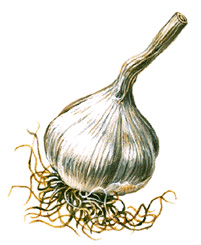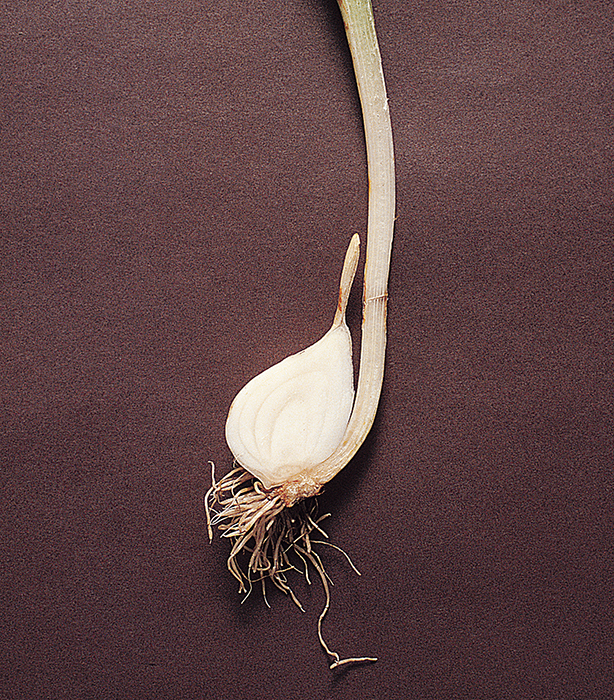Bulb is a round, underground structure that develops in certain flowering plants. A bulb consists largely of layers of thick, fleshy leaves. These surround a small piece of stem tissue, which produces a large bud near the center of the bulb. Roots grow from the bottom of the bulb.

The chief function of a bulb is food storage. During the growing season, the plant stores food in the fleshy leaves of the bulb. As the winter or dry season approaches, the aboveground parts of the plant die, but the bulb with its stored food remains alive underground. At the beginning of the next growing season, the bulb’s central bud sends out a shoot, which produces a stem, leaves, and flowers above the ground. Food stored in the bulb fuels the young shoot’s rapid growth.

Bulbs also have lateral, or branch, buds that develop into new bulbs. Gardeners frequently separate branch bulbs and replant them to produce new plants. This type of reproduction is known as vegetative propagation (see Plant (The reproduction of plants)). Most bulb-forming plants also reproduce by means of seeds produced in their flowers.
Onions and garlic are familiar bulbs used for food and flavoring. Garlic bulbs consist mostly of many separate segments called cloves. Each clove is a lateral bud surrounded by a few fleshy storage leaves. Such popular garden flowers as tulips, daffodils, and narcissuses grow from bulbs that people plant in the fall. People sometimes use the word bulb to refer to corms. Corms resemble bulbs but consist mostly of stem tissue with a few thin, scaly leaves.
See also Corm; Flower (Garden perennials grown from bulbs).
